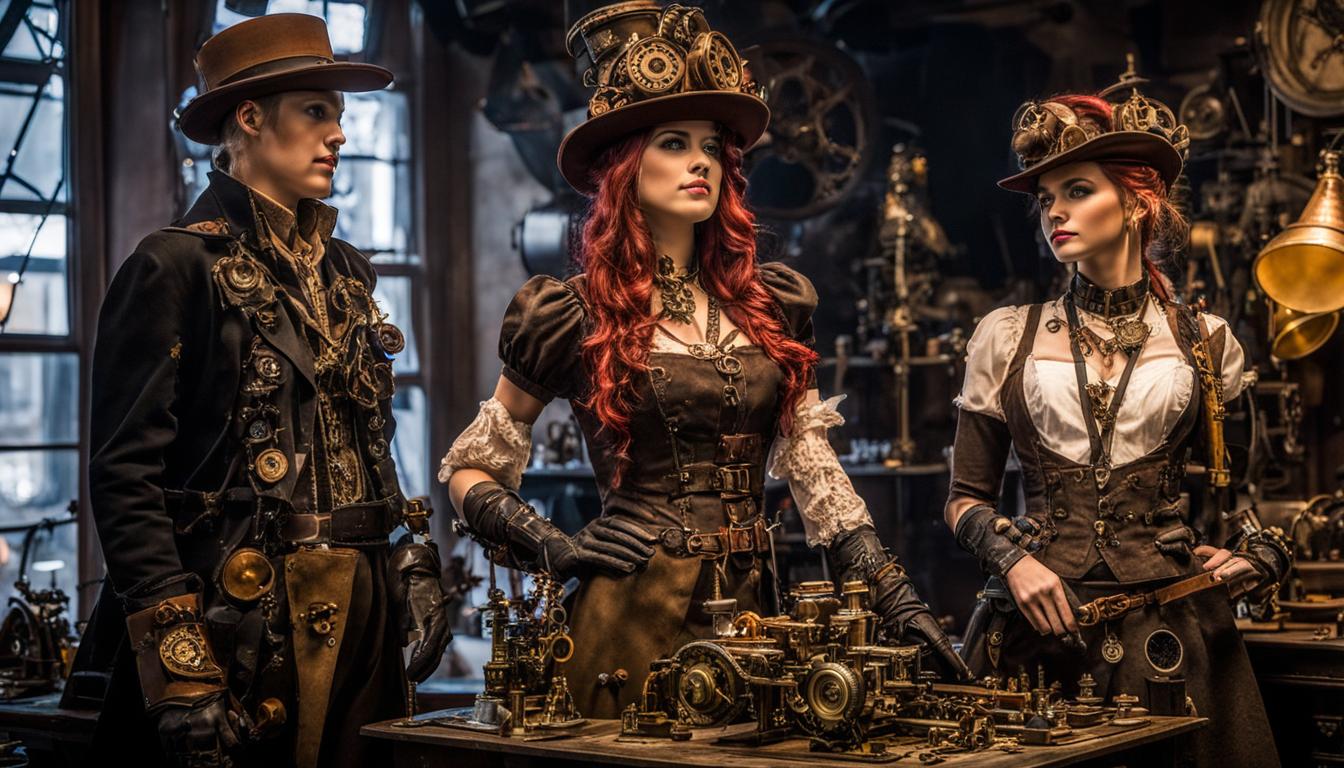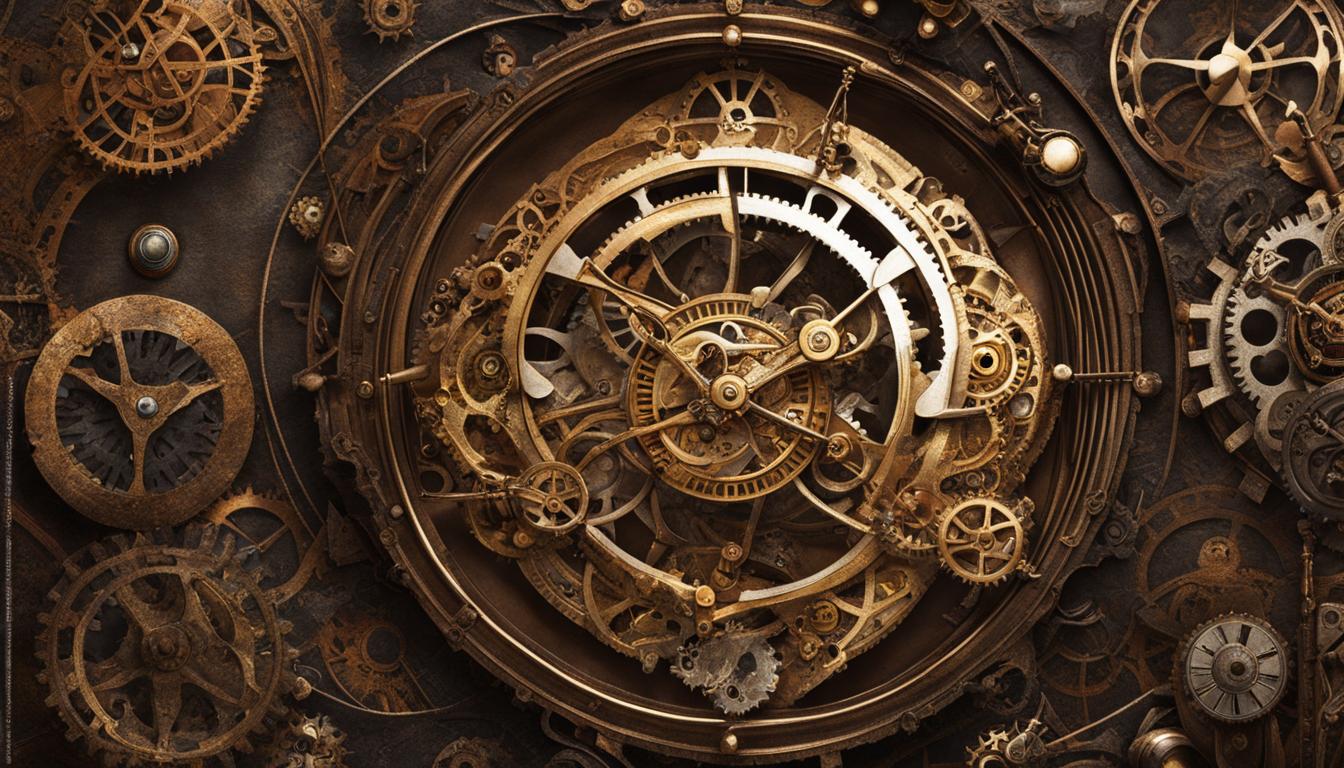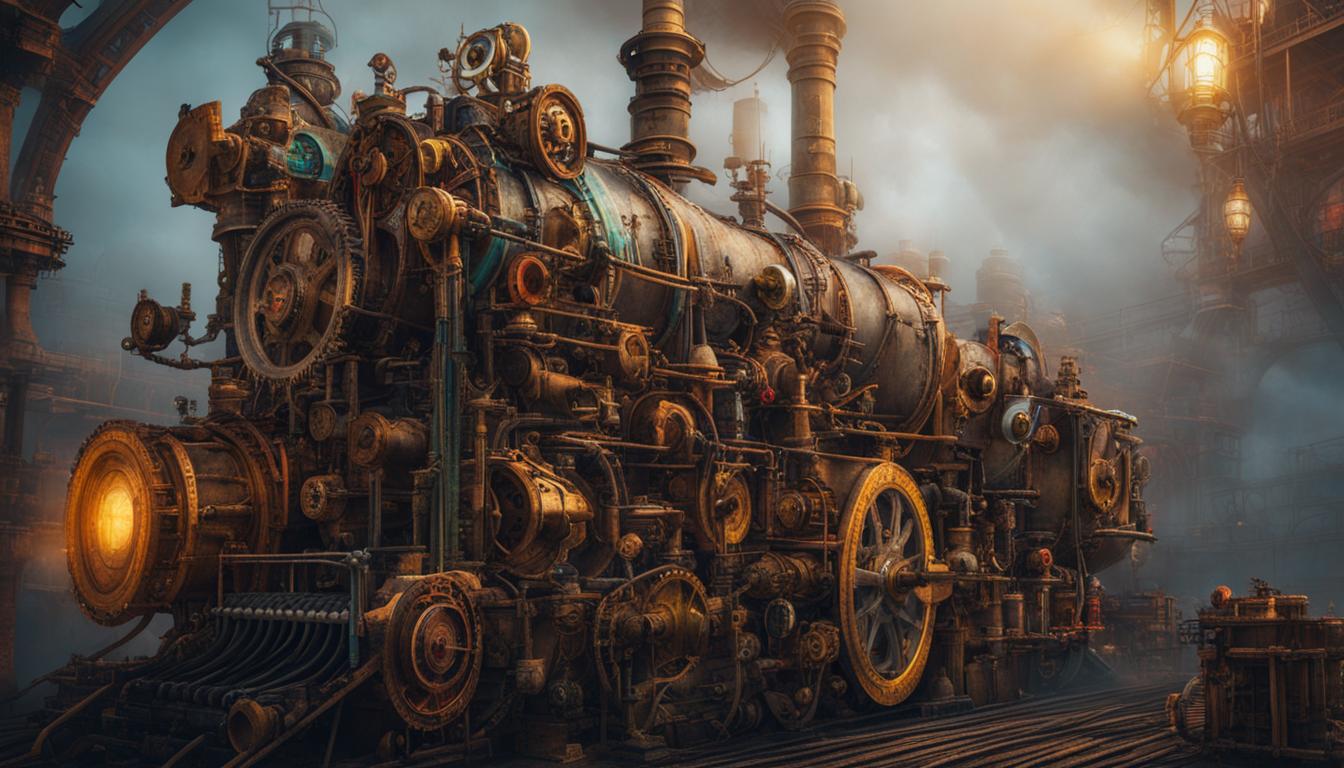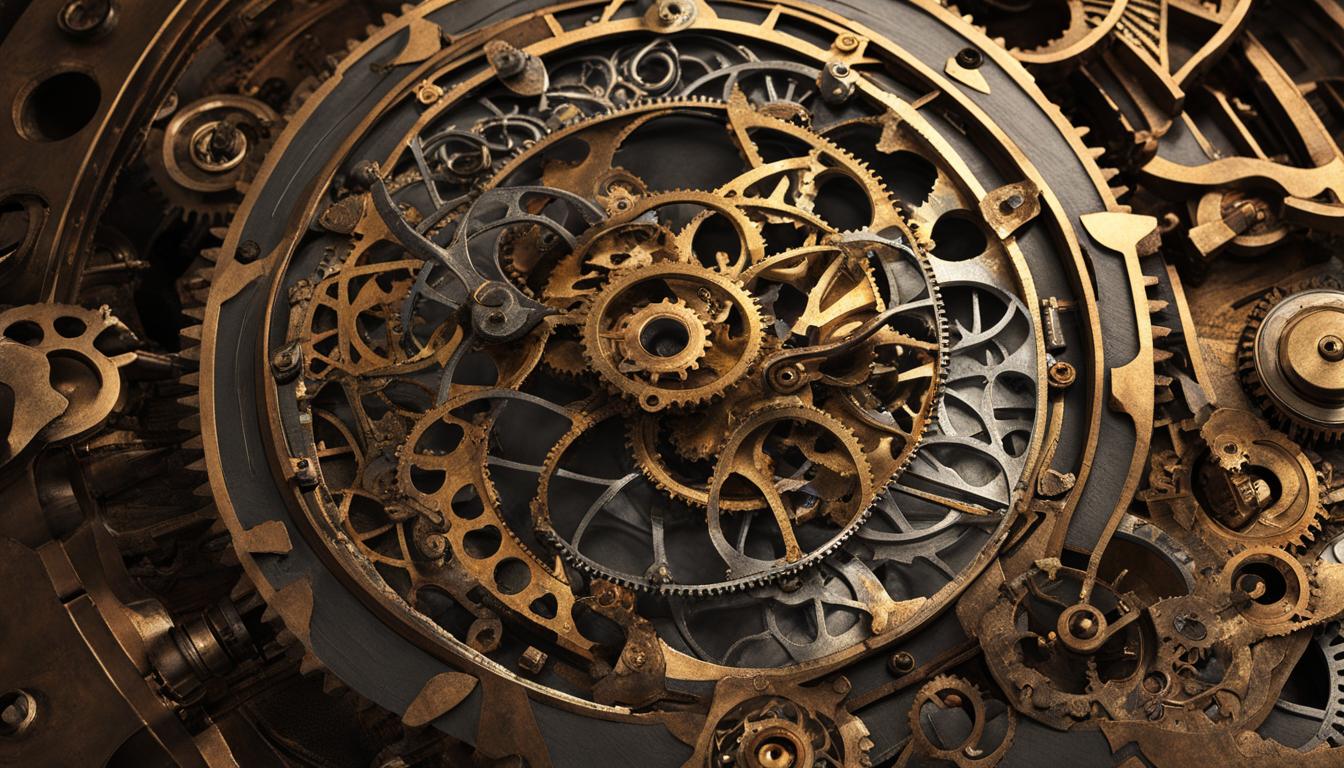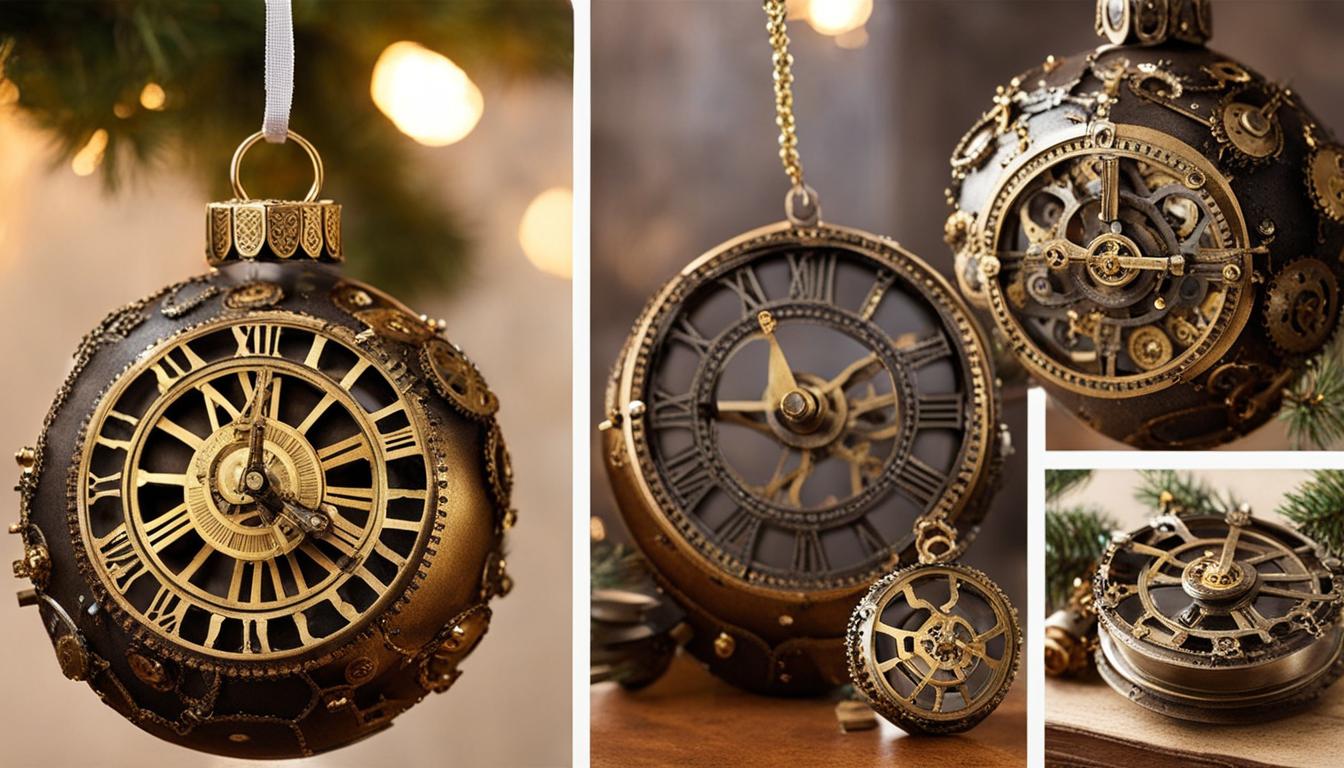Are you ready to step into a world of fantasy and adventure? Dive into the enchanting realm of steampunk fashion and create your own unique costumes with our comprehensive DIY guide. Unleash your creativity and embrace the art of crafting steampunk clothing, bringing together the charm of the Victorian era and the spirit of the industrial revolution.
With our step-by-step instructions and expert tips, you’ll be able to design homemade steampunk outfits that perfectly capture the essence of this captivating style. Whether you’re attending a steampunk convention, hosting a themed party, or simply exploring your passion for fashion, our guide has got you covered.
Key Takeaways:
- Create your own DIY steampunk costumes with our comprehensive guide.
- Embrace the charm of the Victorian era and the industrial revolution with homemade steampunk outfits.
- Discover the essential elements of steampunk fashion, including leather, metal parts, goggles, lace, and distinct colors.
- Unleash your creativity and design unique steampunk attire with our step-by-step instructions.
- Experience the satisfaction of crafting something personalized and truly one-of-a-kind.
What is Steampunk Fashion?
Steampunk fashion is a unique and captivating aesthetic that combines elements of the Victorian era with the spirit of the industrial revolution. It is a style that embraces the fantastical and the mechanical, creating a world where steam-powered technology and the elegance of the past coexist. Steampunk fashion is not simply a trend; it is a subculture that celebrates creativity, craftsmanship, and individuality.
The origins of steampunk fashion can be traced back to science fiction literature, particularly the works of Jules Verne and H.G. Wells. These authors imagined a world where steam-powered machines reigned supreme, inspiring a new wave of creativity and imagination. Steampunk fashion takes inspiration from this era of innovation and exploration, combining it with the romanticism and elegance of the Victorian era.
One of the defining features of steampunk fashion is the incorporation of industrial elements. Gears, cogs, and brass fittings are often used to create a distinctive look that blends the mechanical with the ornate. The use of leather, lace, and corsets adds a touch of sensuality and femininity, while the overall style exudes a sense of adventure and exploration. The color palette of steampunk fashion is typically rich and earthy, with shades of brown, copper, and deep reds.
Steampunk fashion is more than just clothing; it is a form of self-expression and a way to embrace one’s creativity. Whether it’s through DIY projects or carefully curated outfits, steampunk fashion allows individuals to create their own unique style that showcases their love for the past and their fascination with the future. So, embrace the gears, don the goggles, and let your imagination soar in the world of steampunk fashion!
Essential Elements of Steampunk Fashion
Steampunk fashion is characterized by its unique blend of Victorian elegance and industrial aesthetics. To achieve an authentic steampunk look, there are several essential elements that should be incorporated into your costumes and outfits. These elements include:
Goggles
Goggles are perhaps one of the most iconic accessories in steampunk fashion. Often adorned with leather straps and metal accents, goggles add a sense of adventure and mystery to any outfit. Whether worn on the forehead or over the eyes, they instantly give off a steam-powered vibe.
Leather
Leather is another key element in steampunk fashion. It can be used to create everything from corsets and vests to belts and gloves. The rich texture and durability of leather not only adds a touch of authenticity but also enhances the rugged and adventurous nature of the steampunk style.
Metal Parts
Steampunk fashion incorporates various metal parts, such as gears, cogs, and chains, to create a mechanical and industrial look. These elements can be added to clothing, accessories, or even used as decorative accents. The juxtaposition of metal against other materials adds visual interest and depth to steampunk outfits.
Lace
While steampunk fashion is often associated with ruggedness and machinery, lace adds a touch of elegance and femininity to the style. Delicate lace trims or overlays can be incorporated into dresses, blouses, or gloves, creating a beautiful contrast between softness and the harshness of the industrial era.
Colors
When it comes to colors in steampunk fashion, earthy tones and deep, rich hues are commonly used. Think shades of brown, black, burgundy, and olive green. These colors evoke a sense of nostalgia for the Victorian era and complement the industrial theme of steampunk fashion.
| Element | Description |
|---|---|
| Goggles | Iconic accessories that add adventure and mystery to an outfit |
| Leather | Durable and rugged material that enhances the steampunk aesthetic |
| Metal Parts | Gears, cogs, and chains that create a mechanical and industrial look |
| Lace | Delicate and feminine fabric that provides a contrast to the industrial elements |
| Colors | Earthy tones and rich hues that evoke a sense of nostalgia and complement the steampunk style |
How to Make Your Own Steampunk Costume
Creating your own steampunk costume is a thrilling and rewarding DIY project that allows you to express your creativity and immerse yourself in the unique world of steampunk fashion. Whether you’re attending a themed event or simply looking to add some steampunk flair to your wardrobe, designing and sewing your own steampunk costume is a fantastic way to stand out from the crowd.
When starting your steampunk costume journey, it’s essential to find DIY steampunk costume patterns that match your vision. Look for patterns that incorporate the signature elements of steampunk fashion, such as corsets, high-waisted skirts or pants, vests, and jackets. These patterns will serve as the foundation for your costume and provide you with the guidance you need to bring your steampunk vision to life.
Once you have your patterns, it’s time to gather the necessary materials and start sewing. Experiment with different fabrics to achieve the desired steampunk aesthetic. Leather, velvet, lace, and brocade are popular choices that add texture and depth to your costume. Don’t forget to incorporate metal parts, such as gears and buckles, to give your costume an authentic industrial touch.
As you sew your steampunk costume, don’t be afraid to add your own unique touches. Consider embellishing your garments with buttons, chains, and vintage-looking accessories. Get creative with your color choices, opting for rich earth tones or metallic shades that complement the steampunk style. And of course, no steampunk costume is complete without a pair of goggles to enhance the adventurous and futuristic feel.
Designing and sewing your own steampunk costume is a labor of love that allows you to embody the steampunk aesthetic in a way that is completely tailored to your taste. Let your imagination run wild, experiment with different fabrics and accessories, and embrace the DIY spirit of steampunk fashion. With some creativity and sewing skills, you’ll have a one-of-a-kind steampunk costume that will transport you to a world of Victorian elegance and fantastical technology.
| Step | Description |
|---|---|
| 1 | Find DIY steampunk costume patterns that match your vision. |
| 2 | Gather the necessary materials, such as leather, velvet, lace, and metal parts. |
| 3 | Sew your costume using your chosen patterns and fabrics. |
| 4 | Add unique touches, such as buttons, chains, and vintage accessories. |
| 5 | Embrace the steampunk color palette and don’t forget the goggles! |
Conclusion
As the DIY guide to crafting steampunk costumes comes to an end, it’s clear that making your own steampunk attire is a truly rewarding endeavor. By immersing yourself in the world of DIY steampunk fashion, you have the opportunity to express your creativity and showcase your unique personality.
Creating steampunk clothes allows you to delve into a realm of mystery and intrigue, where the Victorian era collides with the industrial revolution. By incorporating essential elements such as leather, metal parts, goggles, lace, and specific colors, you can bring your steampunk vision to life.
This guide has provided you with the necessary steps, materials, and inspiration to embark on your own steampunk costume journey. Whether you’re designing a character ensemble or sewing a personalized outfit, the DIY approach ensures that your steampunk attire is one-of-a-kind.
So, embrace your inner adventurer, dust off your sewing machine, and let your imagination soar. With this DIY guide for steampunk clothing, you have the power to make your own mark in the world of steampunk fashion. Get ready to turn heads and leave a lasting impression with your unique and captivating steampunk attire!
FAQ
Can I create a steampunk costume without sewing skills?
Absolutely! There are plenty of no-sew options available for creating steampunk attire. You can use glue, safety pins, or even repurpose existing clothing to achieve the desired look.
What materials can I use to create a steampunk costume?
Steampunk fashion embraces a mix of materials, including leather, metal parts, lace, and fabrics with Victorian-era patterns. You can also incorporate gears, cogs, and other industrial elements to add an authentic steampunk touch.
How can I find patterns for DIY steampunk costumes?
There are various resources available online where you can find free or affordable steampunk costume patterns. Websites, sewing forums, and social media groups dedicated to steampunk fashion are great places to start.
What is the best way to add steampunk elements to my existing wardrobe?
You can easily transform your everyday clothing into steampunk-inspired outfits by accessorizing with goggles, lace gloves, jewelry with gear motifs, and top hats or bowler hats. Adding these small details can instantly give your look a steampunk twist.
How can I create a unique steampunk character costume?
To create a unique steampunk character costume, mix and match different elements and accessories. Think about the character’s background, story, and personality, and incorporate elements that reflect those aspects. Don’t be afraid to get creative and add your own personal touch to the costume.

